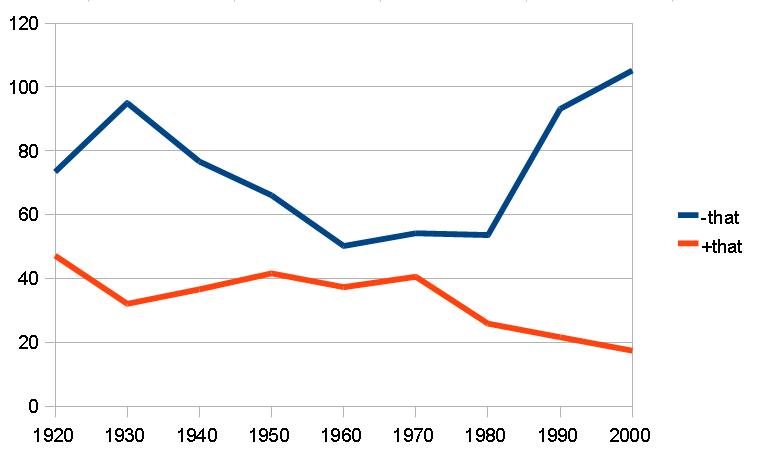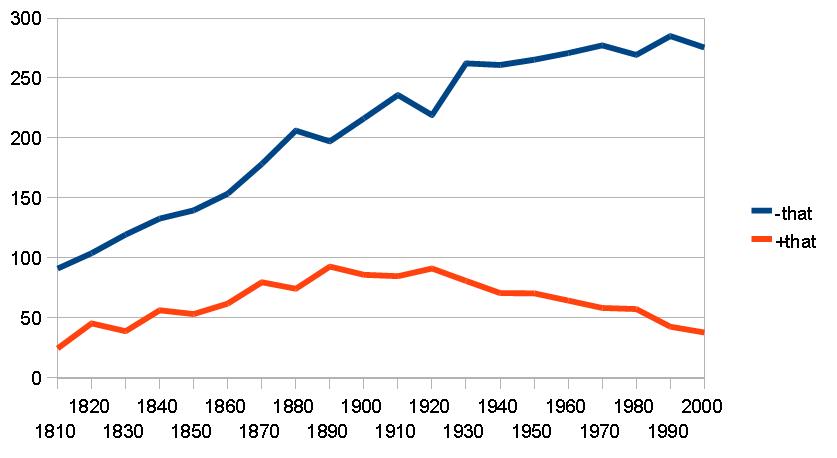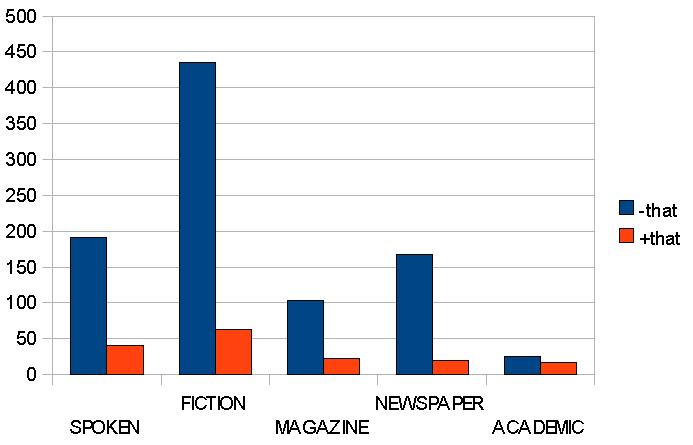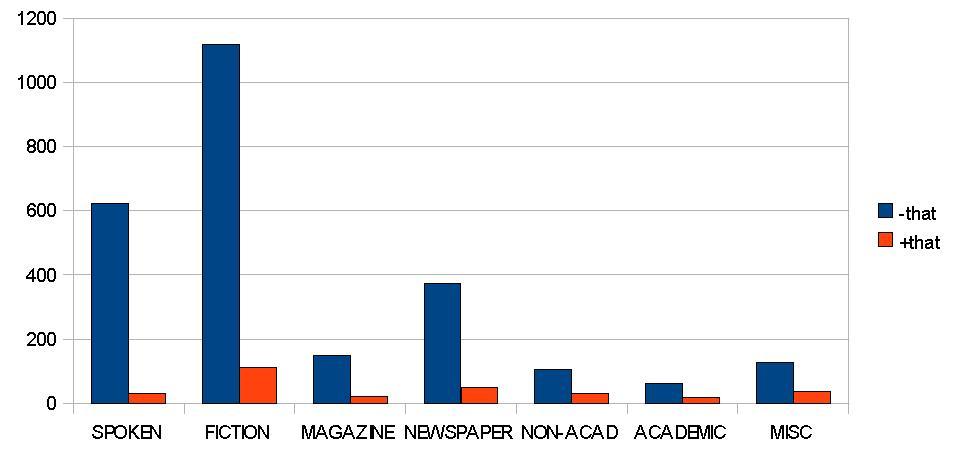
English allows for the complementizer "that" to be dropped at the speaker's or writer's whim. For example, the following sentences are both equally valid:
Looking to the corpora, it appears that -that is more prevalent, perhaps due to the lack of function of an uttered +that. However, it is difficult to determine an overall historical trend; it may be that -that is increasing and +that is increasing. In context, the first verb tends to be "say" or "know", and the second verb is most often "be", "have", or "do" (-that) (+that).
In the TIME Corpus, +that is steadily dropping and -that dipped mid-century but was always more frequent than +that and is now at an all-time high (-that) (+that).

In COHA, +that slowly peaked in the early 1900s then slowly dropped, but was always less frequent than -that (at its peak it occured only half as often). The -that construction has been on the rise until leveling off in the mid to late 1900s (-that) (+that).

Google News Archives showed a constant increase due to increased volume. It is hard to compare the two constructions without any raw numbers, but if one can rely on the graphs it seems that -that was slower to be adopted when looking at the rate of increase (-that) (+that).


COCA had a steady usage rate for both constructions across the years it spanned, albeit -that was far more common in every genre. Fiction then spoken were the genres that most often had either form, and academic seems to shun -that almost as much as +that (-that) (+that).

In the BNC, both constructions are overwhelmingly found in fiction when compared to the other genres, and -that is far more prevalent than +that across every register, as if +that is almost dead (-that) (+that).
